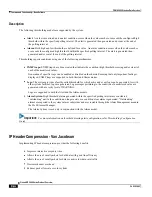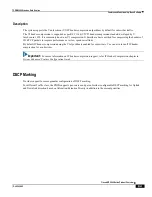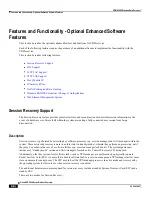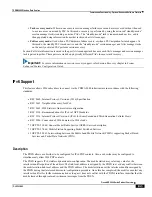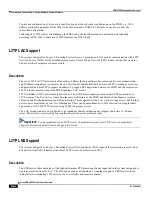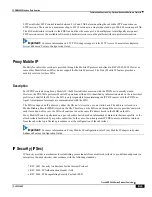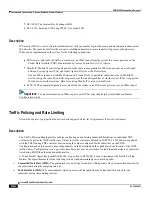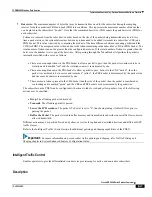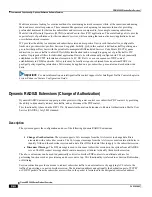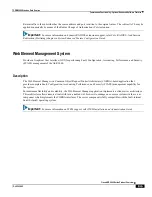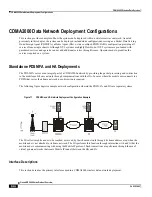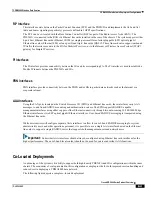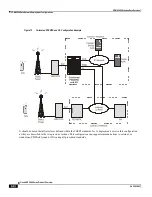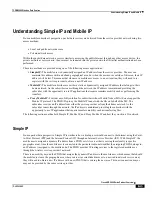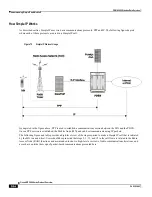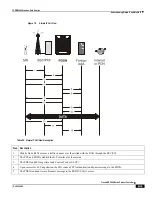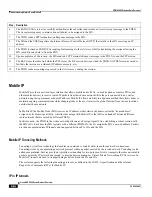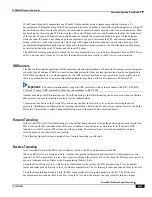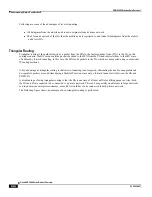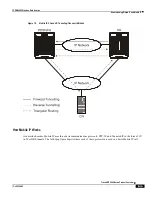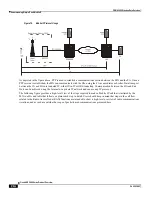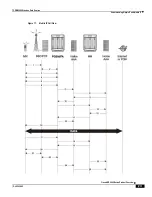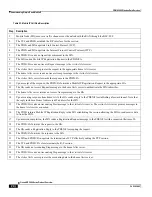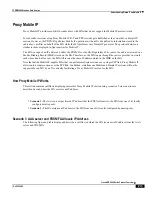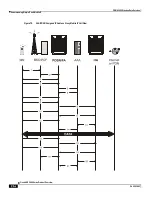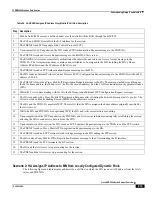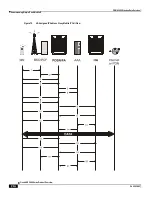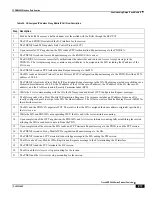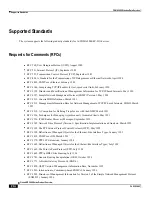
CDMA2000 Wireless Data Services
Understanding Simple IP and Mobile IP ▀
Cisco ASR 5000 Series Product Overview ▄
OL-22938-02
Understanding Simple IP and Mobile IP
From a mobile subscriber's perspective, packet data services are delivered from the service provider network using two
access methods:
Local and public network access
Private network access
Within the packet data network, access is similar to accessing the public Internet through any other access device. In a
private network access scenario, the user must be tunneled into the private network after initial authentication has been
performed.
These two methods are provided using one of the following access applications:
Simple IP:
The mobile user is dynamically assigned an IP address from the service provider. The user can
maintain this address within a defined geographical area, but when the user moves outside of this area, their IP
address will be lost. This means that whenever a mobile user moves to a new location, they will need to re-
register with the service provider to obtain a new IP address.
Mobile IP:
The mobile subscriber uses either a static or dynamically assigned IP address that belongs to their
home network. As the subscriber roams through the network, the IP address is maintained providing the
subscriber with the opportunity to use IP applications that require seamless mobility such as performing file
transfers.
Proxy Mobile IP:
Provides a mobility solution for subscribers whose Mobile Nodes (MNs) do not support the
Mobile IP protocol. The PDSN/FA proxy the Mobile IP tunnel with the HA on behalf of the MS. The
subscriber receives an IP address from either the service provider or from their home network. As the
subscriber roams through the network, the IP address is maintained providing the subscriber with the
opportunity to use IP applications that require seamless mobility such as transferring files.
The following sections outline both Simple IP, Mobile IP, and Proxy Mobile IP and how they work in a 3G network.
Simple IP
From a packet data perspective, Simple IP is similar to how a dial-up user would connect to the Internet using the Point-
to-Point Protocol (PPP) and the Internet Protocol (IP) through an Internet Service Provider (ISP). With Simple IP, the
mobile user is assigned a dynamic IP address from a PDSN or AAA server that is serving them locally (a specific
geographic area). Once the mobile user is connected to the particular radio network that the assigning PDSN belongs to,
an IP address is assigned to the mobile node. The PDSN provides IP routing services to the registered mobile user
through the wireless service provider's network.
There is no mobility beyond the PDSN that assigns the dynamic IP address to the mobile user, which means that should
the mobile user leave the geographic area where service was established (moves to a new radio network service area),
they will need to obtain a new IP address with a new PDSN that is serving the new area. This new connection may or
may not be provided by the same service provider.
Summary of Contents for ASR 5000 Series
Page 1: ......
Page 26: ......
Page 48: ...New In Release 10 0 SCM Features Cisco ASR 5000 Series Product Overview OL 22938 02 ...
Page 50: ......
Page 58: ......
Page 68: ......
Page 126: ......
Page 138: ......
Page 146: ......
Page 218: ......
Page 236: ......
Page 356: ......
Page 374: ......
Page 422: ......
Page 496: ......
Page 572: ......
Page 654: ......
Page 700: ......
Page 726: ......
Page 784: ......
Page 816: ......
Page 844: ......
Page 906: ......
Page 926: ......
Page 942: ......
Page 943: ...Cisco ASR 5000 Series Product Overview OL 22938 02 Chapter 30 Technical Specifications ...
Page 966: ......
Page 972: ......


